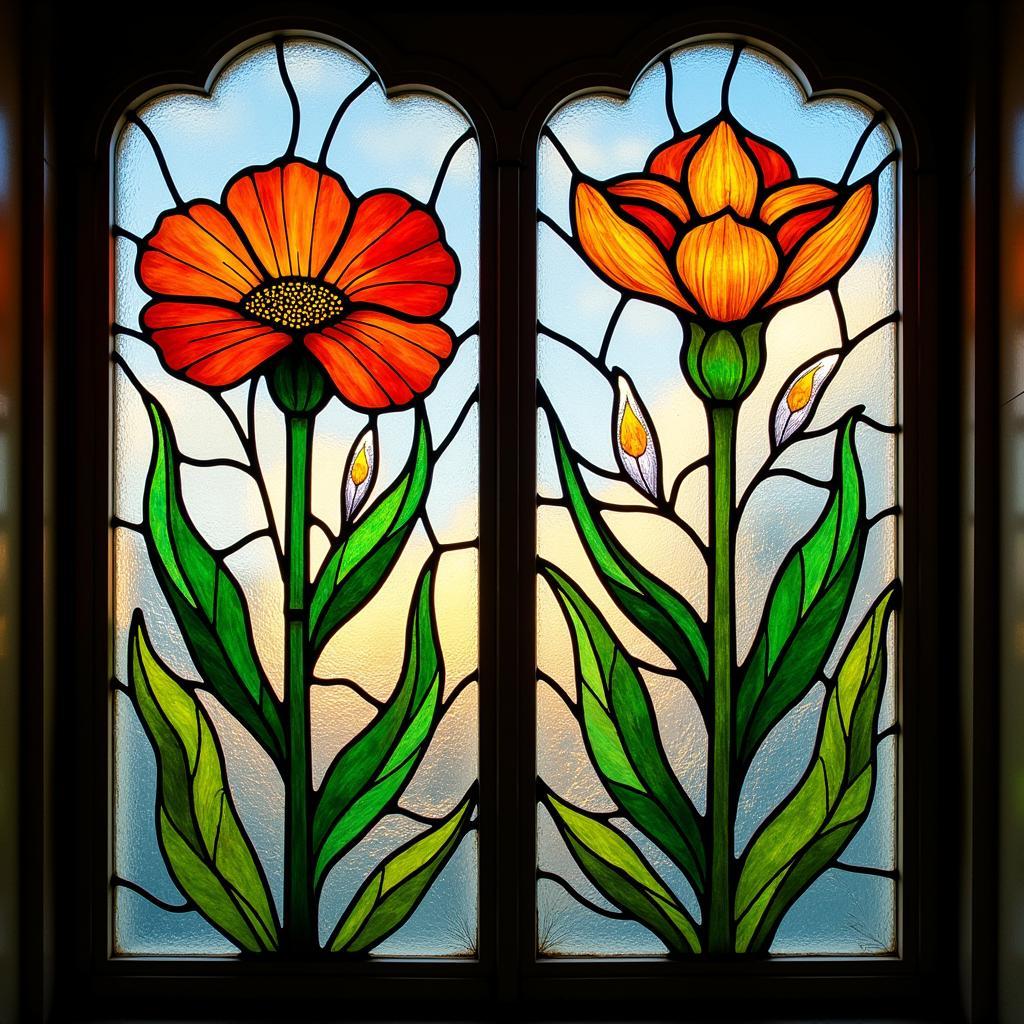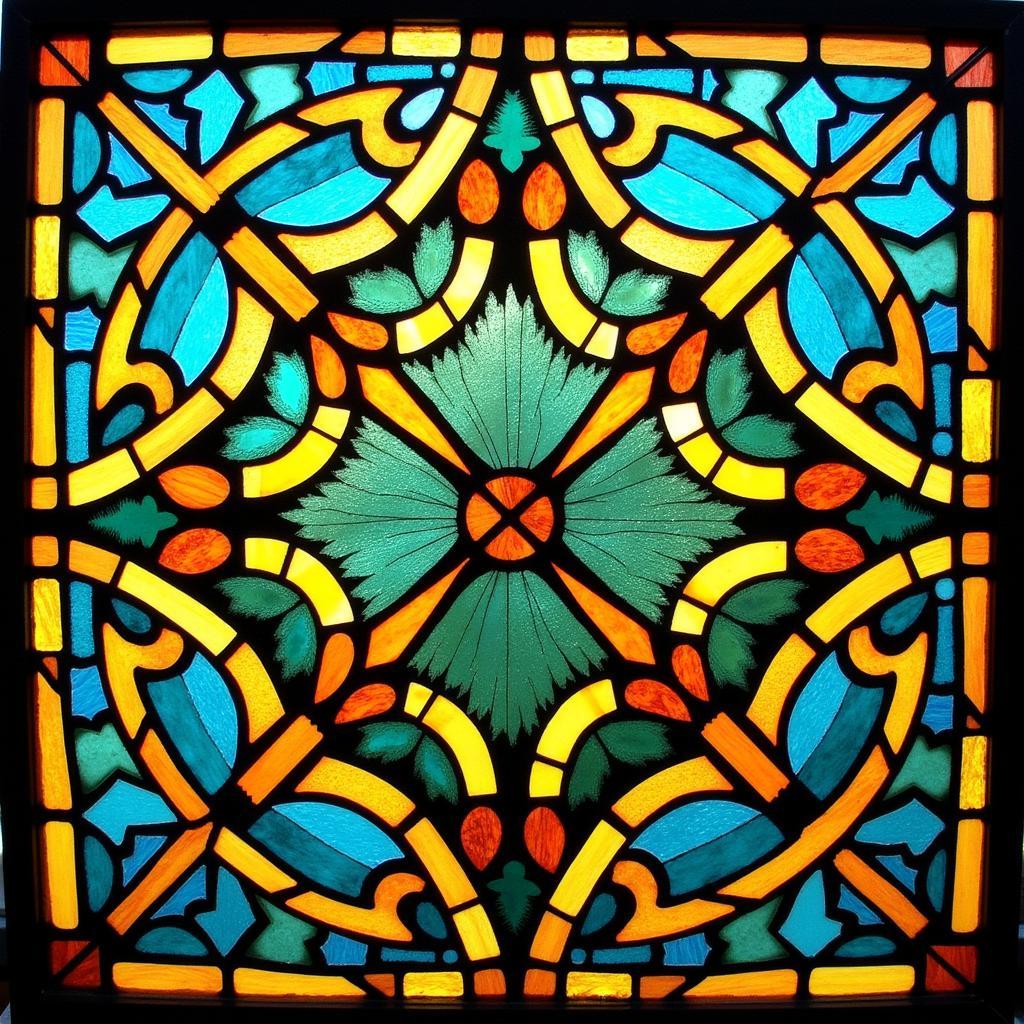Exploring the Arts and Crafts Movement Stained Glass
The Arts And Crafts Movement Stained Glass, flourishing between the late 19th and early 20th centuries, represents a pivotal moment in the history of decorative arts. This period saw a rejection of mass-produced industrial design in favor of handcrafted beauty, emphasizing natural forms, traditional craftsmanship, and a return to simpler values. The movement’s influence on stained glass was profound, resulting in stunning works that continue to inspire artists and captivate viewers today.
The Arts and Crafts movement championed the idea that beautiful, functional objects should be accessible to all. This philosophy is beautifully embodied in the stained glass of the era, which adorned not only grand churches and public buildings but also found its way into the homes of ordinary people, brightening everyday life with vibrant colors and intricate designs. You might find it interesting to explore the beauty and craftsmanship of arts and craft lamps.
The Defining Characteristics of Arts and Crafts Stained Glass
Several key characteristics distinguish Arts and Crafts stained glass. These pieces often feature stylized depictions of nature, including flowers, leaves, birds, and insects. Geometric patterns, inspired by medieval and Celtic art, were also prevalent. The emphasis was on simplicity and clarity of design, avoiding the excessive ornamentation that characterized Victorian-era stained glass.
What sets Arts and Crafts stained glass apart is its commitment to handcrafted quality. Artists often used opalescent glass, which had a milky, iridescent quality, adding depth and luminosity to their creations. The leading figures of the movement, such as Louis Comfort Tiffany and William Morris, advocated for the revival of traditional glassmaking techniques, further enhancing the artistic value of these works.
 Arts and Crafts Stained Glass Window with Nature and Floral Design
Arts and Crafts Stained Glass Window with Nature and Floral Design
The Influence of William Morris and the Arts & Crafts Movement
William Morris, a key figure in the Arts and Crafts movement, played a significant role in shaping the aesthetic of stained glass during this period. His designs often drew inspiration from medieval art and literature, emphasizing intricate patterns and rich, jewel-toned colors. Morris believed in the importance of traditional craftsmanship and advocated for the unity of art and life, believing that beautiful surroundings could elevate the human spirit. This philosophy resonated deeply with other artists and designers, leading to a widespread embrace of Arts and Crafts principles.
The Role of Nature in Arts & Crafts Stained Glass Designs
Nature played a central role in Arts and Crafts stained glass designs. Artists often depicted stylized flowers, leaves, birds, and insects, capturing the essence of the natural world in their work. This focus on natural forms reflected a broader movement towards simpler, more organic aesthetics. The use of natural motifs also served to bring the beauty of the outdoors into the home, creating a sense of harmony and tranquility. Did you know that the movement also influenced other decorative elements, like crown molding arts and crafts?
The Legacy of Arts and Crafts Stained Glass Today
The Arts and Crafts movement stained glass continues to inspire artists and designers today. Its emphasis on handcrafted quality, natural forms, and simple, elegant design resonates with contemporary sensibilities. Many artists are revisiting the techniques and aesthetics of the movement, creating new works that capture the spirit of the original while adding their own unique interpretations. You can even find echoes of the movement in contemporary pieces like an art glass table.
One might wonder, how does one distinguish authentic Arts and Crafts stained glass from later imitations? Look for the hallmarks of handcrafted quality: variations in glass thickness, hand-cut pieces, and visible lead lines. Authentic pieces often have a subtle, organic feel that is difficult to replicate with mass-production techniques.
“The true beauty of Arts and Crafts stained glass lies in its imperfections, the subtle variations that are a testament to the hand of the artist,” explains Amelia Blackwood, a renowned stained glass conservator. “These imperfections are what give the pieces their character and soul.”
 Arts and Crafts Stained Glass Panel with Geometric Pattern
Arts and Crafts Stained Glass Panel with Geometric Pattern
Conclusion
The Arts and Crafts movement stained glass represents a significant chapter in the history of art and design. Its enduring appeal lies in its timeless beauty, handcrafted quality, and connection to nature. These stunning works continue to inspire awe and wonder, reminding us of the transformative power of art and the enduring legacy of the Arts and Crafts movement. You could also explore the intricate details and craftsmanship of arts and crafts frames. Consider incorporating some of these beautiful elements into your home décor with the addition of arts & crafts ceiling fans.
FAQ
-
What is the Arts and Crafts movement?
A design movement emphasizing handcrafted items over mass production. -
What are the key characteristics of Arts and Crafts stained glass?
Nature themes, geometric patterns, simple designs, opalescent glass. -
Who were some influential figures in the movement?
William Morris and Louis Comfort Tiffany. -
Why is nature so prominent in Arts and Crafts designs?
It reflects the movement’s focus on organic aesthetics and bringing the outdoors in. -
Where can I see examples of Arts and Crafts stained glass today?
Museums, historical homes, and some private collections. -
Are there modern artists still working in this style?
Yes, many contemporary artists are reviving and reinterpreting the style.
When you need assistance, please contact Phone Number: 02462573573, Email: [email protected] Or visit us at Savico Megamall, 7-9 Đ. Nguyễn Văn Linh, Gia Thụy, Long Biên, Hà Nội 10000, Việt Nam. We have a 24/7 customer service team.


